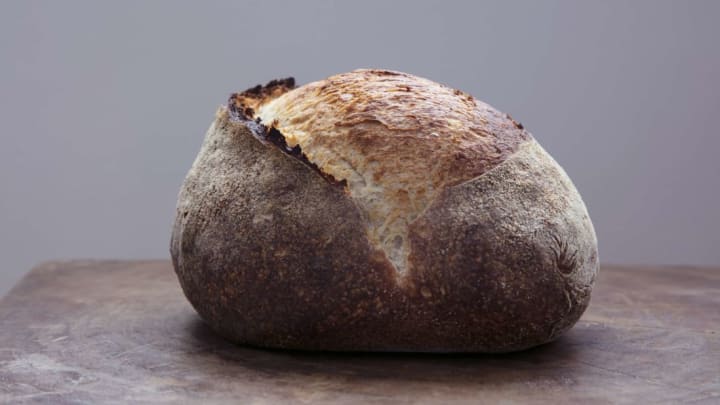Baking bread can relieve stress and it requires long stretches of time at home that many of us now have. But shoppers have been panic-buying some surprising items since the start of the COVID-19 crisis. In addition to pantry staples like rice and beans, yeast packets are suddenly hard to find in grocery stores. If you got the idea to make homemade bread at the same time as everyone on your Instagram feed, don't let the yeast shortage stop you. As long as you have flour, water, and time, you can grow your own yeast at home.
While many bread recipes call for either instant yeast or dry active yeast, sourdough bread can be made with ingredients you hopefully already have on hand. The key to sourdough's unique, tangy taste lies in its "wild" yeast. Yeast is a single-celled type of fungus that's abundant in nature—it's so abundant, it's floating around your home right now.
To cultivate wild yeast, you need to make a sourdough starter. This can be done by combining one cup of flour (like whole grain, all-purpose, or a mixture of the two) with a half cup of cool water in a bowl made of nonreactive material (such as glass, stainless steel, or food-grade plastic). Cover it with plastic wrap or a clean towel and let it sit in a fairly warm place (70°F to 75°F) for 24 hours.
Your starter must be fed with one cup of flour and a half cup of water every day for five days before it can be used in baking. Sourdough starter is a living thing, so you should notice it start to bubble and grow in size over time (it also makes a great low-maintenance pet if you're looking for company in quarantine). On the fifth day, you can use your starter to make dough for sourdough bread. Here's a recipe from King Arthur Flour that only calls for starter, flour, salt, and water.
If you just want to get the urge to bake out of your system, you can toss your starter once you're done with it. If you plan on making sourdough again, you can use the same starter indefinitely. Starters have been known to live in people's kitchens for decades. But to avoid using up all your flour, you can store yours in the fridge after the first five days and reduce feedings to once a week.
